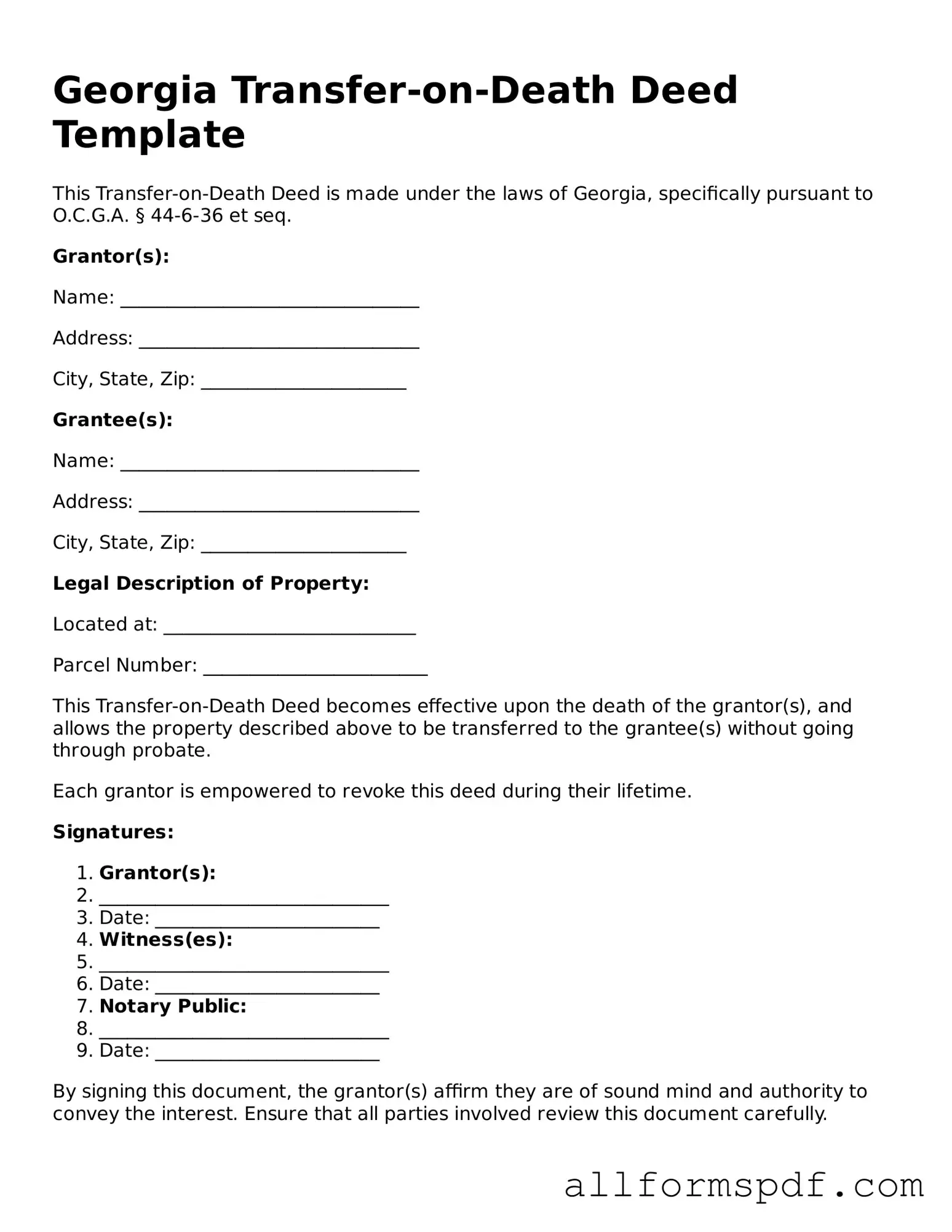Filling out the Georgia Transfer-on-Death Deed form can be straightforward, but several common mistakes can lead to complications. One frequent error is failing to include the legal description of the property. This description is essential for identifying the property being transferred. Without it, the deed may be deemed invalid.
Another mistake involves not properly identifying the beneficiaries. It's crucial to provide the full names and addresses of all individuals receiving the property. Omitting this information or using nicknames can create confusion and may lead to disputes among potential heirs.
People often overlook the importance of signing the deed. The form must be signed by the property owner in the presence of a notary public. If the signature is missing or not notarized, the deed cannot be executed legally.
Some individuals fail to record the deed with the appropriate county office. Recording the deed is necessary for it to take effect. Without this step, the transfer may not be recognized by the state or could be challenged later.
Another common error is not updating the deed after significant life events, such as marriage, divorce, or the death of a beneficiary. Changes in personal circumstances can affect the validity of the deed. Keeping the information current is essential.
Many people also neglect to review the deed for accuracy before submission. Simple typographical errors can lead to misunderstandings or legal issues. It is advisable to double-check all entries for correctness.
Some individuals may not understand the implications of transferring property via a Transfer-on-Death Deed. It is important to recognize that this deed does not eliminate debts associated with the property. Beneficiaries may still be responsible for any outstanding obligations.
Another mistake is not considering tax implications. Transferring property can have tax consequences for beneficiaries. It is wise to consult with a tax professional to understand potential liabilities.
People sometimes fail to communicate their intentions with family members. Transparency can prevent disputes after the property owner’s death. Discussing plans with beneficiaries can help ensure everyone understands the arrangement.
Lastly, individuals may not seek legal advice when needed. While the form is designed for self-completion, consulting with an attorney can provide clarity and help avoid common pitfalls. Legal guidance can be especially beneficial for complex situations.
